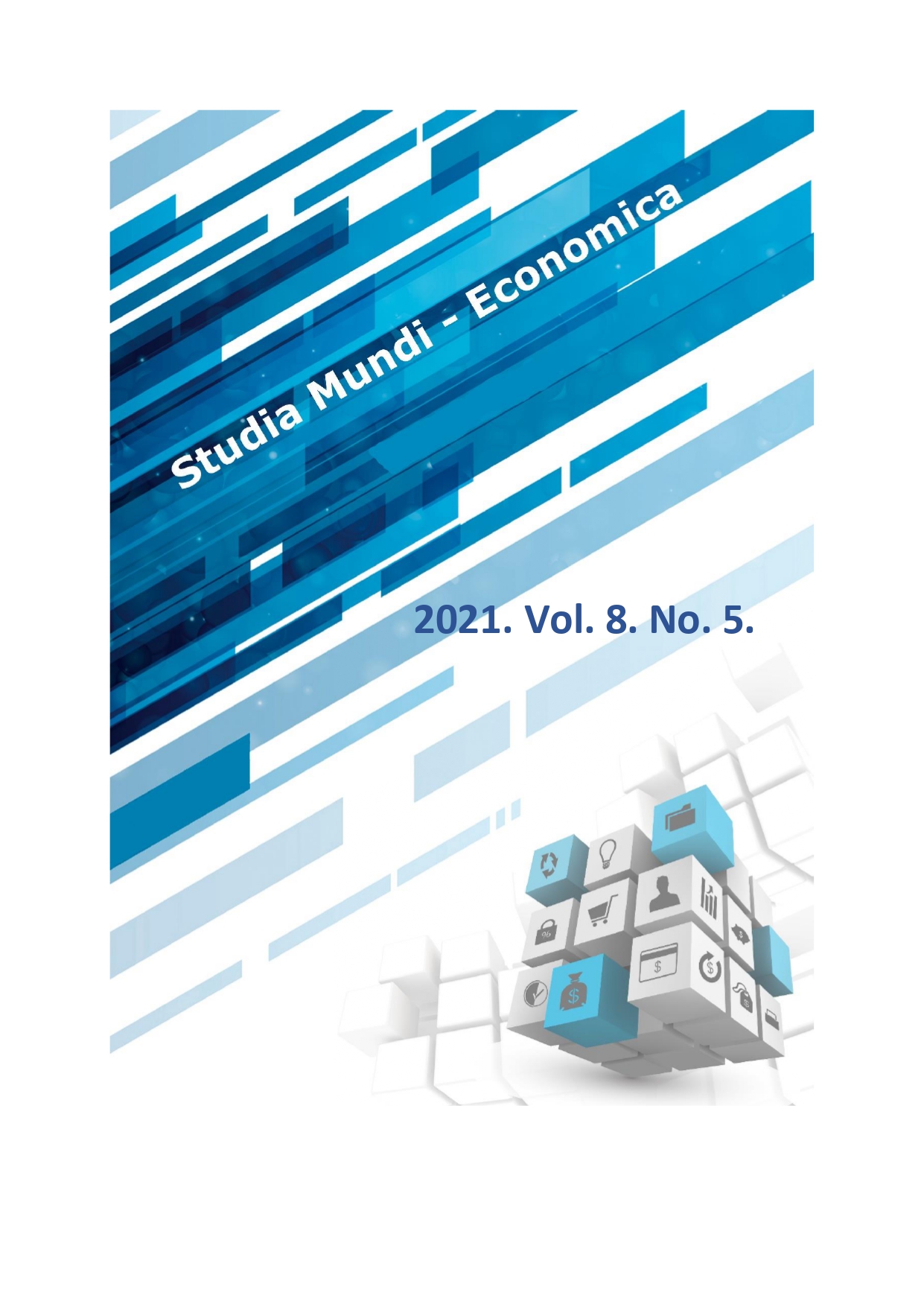Changes in governmental leadership strategies after pandemic
DOI:
https://doi.org/10.18531/Studia.Mundi.2021.08.05.17-24Kulcsszavak:
leadership, leadership strategies, reputation risksAbsztrakt
Effective leadership is a term an understanding and underlying principles of which are a conceptually challenged and constantly evolving research topic. This article provides a brief listing of the leadership strategies used by European leaders in 2020-2021 and the tools for their implementation. The assessment the reputation consequences, which were undoubtedly influenced by the adoption of crisis decisions and the results. The author of the article will leave the question of which of the tools used in the fight against the pandemic will be implemented in the post-Covid governance agenda as a subject of reflection.
Hivatkozások
Anderies, J. M., and M. A. Janssen. 2013. “Robustness of Social‐Ecological Systems: Implications for Public Policy.” Policy Studies Journal 41 (3): 513‒536. DOI: https://doi.org/10.1111/psj.12027. [Crossref], [Web of Science ®], [Google Scholar]
Ansell, C., and J. Trondal. 2018. “Governing Turbulence: An Organizational-Institutional Agenda.” Perspectives on Public Management and Governance 1 (1): 43‒57. DOI: https://doi.org/10.1093/ppmgov/gvx013. [Crossref], [Google Scholar]
Capano, G., and J. J. Woo. 2017. “Resilience and Robustness in Policy Design: A Critical Appraisal.” Policy Sciences 50 (3): 399‒426. DOI: https://doi.org/10.1007/s11077-016-9273-x. [Crossref], [Web of Science ®], [Google Scholar]
Carlson, J. M., and J. Doyle. 2002. “Complexity and Robustness.” Proceedings of the National Academy of Sciences 99 (suppl 1): 2538‒2545. DOI: https://doi.org/10.1073/pnas.012582499. [Crossref], [Google Scholar]
Drury, J., H. Carter, C. Cocking, E. Ntontis, S. Tekin Guven, and R. Amlôt. 2019. “Facilitating Collective Resilience in the Public in Emergencies: Twelve Recommendations Based on the Social Identity Approach.” Frontiers in Public Health 7: 181. DOI: https://doi.org/10.3389/fpubh.2019.00181. [Crossref], [PubMed], [Web of Science ®], [Google Scholar]
Gray, B. 1989. Collaborating: Finding Common Ground for Multiparty Problems. San Francisco: Jossey Bass. [Google Scholar]
Haslam, S. A., S. D. Reicher, and M. J. Platow. 2010. The New Psychology of Leadership: Identity, Influence and Power. London: Psychology Press. [Crossref], [Google Scholar]
Howlett, M., G. Capano, and M. Ramesh. 2018. “Designing for Robustness: Surprise, Agility and Improvisation in Policy Design.” Policy and Society 37 (4): 405‒421. DOI: https://doi.org/10.1080/14494035.2018.1504488. [Taylor & Francis Online], [Web of Science ®], [Google Scholar]
Huber, P. J. 1981. Robust Statistics. New York: John Wiley & Sons. [Crossref], [Google Scholar]
Hyvärinen, J., and M. Vos. 2015. “Developing a Conceptual Framework for Investigating Communication Supporting Community Resilience.” Societies 5 (3): 583–597. DOI: https://doi.org/10.3390/soc5030583. [Crossref], [Web of Science ®], [Google Scholar]
Jetten, J., S. D. Reicher, S. A. Haslam, and T. Cruwys, eds. 2020. Together apart: The Psychology of COVID-19. New York: SAGE. [Google Scholar]
Kitano, H. 2004. “Biological Robustness.” Nature Reviews Genetics 5 (11): 826‒837. DOI: https://doi.org/10.1038/nrg1471. [Crossref], [PubMed], [Web of Science ®], [Google Scholar]
Leeson, P. T., and J. Robert Subrick. 2006. “Robust Political Economy.” The Review of Austrian Economics 19 (2‒3): 107‒111. DOI: https://doi.org/10.1007/s11138-006-7342-7. [Crossref], [Google Scholar]
Löfstedt, R., and J. Wardman. 2016. “State of the Art Transparency: lessons from Europe and North America.” Journal of Risk Research 19 (9): 1079–1081. DOI: https://doi.org/10.1080/13669877.2016.1249713. [Taylor & Francis Online], [Web of Science ®], [Google Scholar]
Mintzberg, H., and M. Alexandra. 1985. “Strategy Formation in an Adhocracy.” Administrative Science Quarterly 30 (2): 160‒197. DOI: https://doi.org/10.2307/2393104. [Crossref], [PubMed], [Web of Science ®], [Google Scholar]
Müller, Henriette, and,Femke A. W. J Van Esch. 2020. “The Contested Nature of Political Leadership in the European Union: conceptual and Methodological Cross-Fertilisation.” West European Politics 43 (5): 1051–1071. DOI: https://doi.org/10.1080/01402382.2019.1678951. [Taylor & Francis Online], [Web of Science ®], [Google Scholar]
Reynolds, B. 2006. “Response to Best Practices.” Journal of Applied Communication Research 34 (3): 249–252. DOI: https://doi.org/10.1080/00909880600771593. [Taylor & Francis Online], [Web of Science ®], [Google Scholar]
Reynolds, B. 2010. “Principles to Enable Leaders to Navigate the Harsh Realities of Crisis and Risk Communication.” Journal of Business Continuity & Emergency Planning 4 (3): 262–273. [PubMed], [Google Scholar]
Rickard, L. N. 2019. "Pragmatic and (or) constitutive? On the foundations of contemporary risk communication research." Risk analysis. DOI: https://doi.org/10.1111/risa.13415 [Google Scholar]
Simonovic, S. P., and R. Arunkumar. 2016. “Comparison of Static and Dynamic Resilience for a Multipurpose Reservoir Operation.” Water Resources Research 52 (11): 8630–8649. DOI: https://doi.org/10.1002/2016WR019551. [Crossref], [Web of Science ®], [Google Scholar]
Tham Yuem C. (2020): Transparency key to allaying people's fears during Covid-19 outbreak, says DPM Heng https://www.straitstimes.com/authors/tham-yuen-c
Wardman, J. K., and R. Löfstedt. 2018. “Anticipating or Accommodating to Public Concern? Risk Amplification and the Politics of Precaution Reexamined.” Risk Analysis: An Official Publication of the Society for Risk Analysis 38 (9): 1802–1819. DOI: https://doi.org/10.1111/risa.12997. [Crossref], [PubMed], [Web of Science ®], [Google Scholar]
Letöltések
Megjelent
Folyóirat szám
Rovat
License
Copyright (c) 2021 Aleksandra Kiriukhina, Tibor Farkas

This work is licensed under a Creative Commons Attribution-NonCommercial-NoDerivatives 4.0 International License.
A folyóirat Open Access (Gold). Cikkeire a Creative Commons 4.0 standard licenc alábbi típusa vonatkozik: CC-BY-NC-ND-4.0. Ennek értelmében a mű szabadon másolható, terjeszthető, bemutatható és előadható, azonban nem használható fel kereskedelmi célokra (NC), továbbá nem módosítható és nem készíthető belőle átdolgozás, származékos mű (ND). A licenc alapján a szerző vagy a jogosult által meghatározott módon fel kell tüntetni a szerző nevét és a szerzői mű címét (BY).






